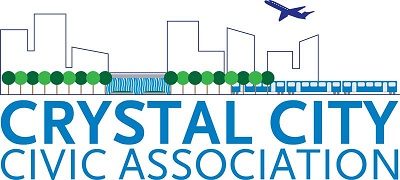After 10 months of study and public meetings, VDOT released its feasibility report on Route 1 at the final Public Information Meeting June 16. No surprise: the recommendation is to bring Route 1 down to grade. The Livability Working Group released a press release on June 27. Read the full text below:
The Arlington 22202 Civic Associations united in Livability22202 find VDOT’s Feasibility Study of Route 1 Multimodal Improvements to be incomplete. It raises further questions, fails to address a number of community concerns, and recommends a traffic pattern that, by VDOT’s own recognition, reduces safety. If Arlington County and the state proceed without addressing these concerns, our community will be further divided by a dangerous, wide road that puts cars before pedestrians and bikes. The Associations urge Arlington County Board not to approve the study when submitted unless these larger questions and concerns are addressed.
Background:
VDOT is finalizing a Feasibility Study of Route 1 in Crystal City, in partial compliance of the HQ2 agreement between Amazon and Virginia. VDOT recommends an at-grade urban boulevard to replace the current overpasses at 18th and 15th streets. VDOT estimates that bringing Route 1 to grade will cost $180 million, but that estimate excludes many related costs.. The VDOT project website is at http://www.virginiadot.org/projects/northernvirginia/route_1_multimodal_improvements_study.asp. The meeting recording and slide deck from the third public meeting are available through this page: https://www.virginiadot.org/projects/northern_virginia/route_1_multimodal_improvements_study-third_virtual_public_information_meeting.asp
In what respects is the study incomplete? Why is further study needed?
1. Safety: The study does not achieve VDOT’s own number one Project Goal: safety for all traveling along and across Route 1. VDOT admitted that there are tradeoffs and safety is one of them. No safety analysis was done (e.g., the Highway Safety Manual), and the study does not meet Arlington’s Vision Zero or Master Transportation Plan standards. Safety research generally shows that there will be safety issues for any signalized arterial with more than 5 lanes, with speed above 25 mph, and more than 40,000 vehicles/day. This study recommendation does not meet those standards. What can make crossing Route 1 safe for parents and students if a new school is built in the area? How will pedestrians who are older, more frail, or with mobility, cognitive, or sensory impairments cross safely?
2. Traffic: VDOT admitted that option 3 for bringing Route 1 down to grade will make traffic worse by diverting it onto side streets. If Transportation Demand Management (TDM) measures could indeed reduce traffic as they assert, then why aren’t they being implemented now? There needs to be a true analysis of regional travel through the corridor as well as transit capacity. How will traffic from Glebe Road via Route 1 to I-395 be managed? How will the County manage traffic diverted onto our local streets to prevent gridlock and keep all of us safe?
3. Urban Design: This is an unambitious design that looks only at a small section of Route 1 in isolation rather than taking a holistic approach to the corridor to the Alexandria County line. It thus disregards significant stretches of Route 1, Glebe Rd., and the proposal for the airport access road in the Crystal City Sector Plan (CCSP). Likewise, the design makes no effort to ratchet down traffic entering the community, instead including 7 lanes on 15th St–the same number on Route 1 itself currently. Good urban street design would design changes on intersecting streets to change behavior of drivers as they turn off the highway. Why is the focus only on 18th and 15th Streets, without addressing the 23rd Street intersection and points south?
4. Impact on community: The study ignores what is proposed in the approved CCSP for 15th Street, 18th Street, and the airport access road. There is tremendous value created for developers, by opening up frontages on such lots as 1800 Bell St, but besides future real estate tax revenue, this project does not deliver any sort of improvement to the community. Rather, removing the 18th and 15th Street underpasses without providing adequate safety measures reduces community access across Route 1. Increasing traffic diversion on neighborhood streets affects quality of life and safety. Will the proceeds from any public land sales be sunk back into the project, rather than be used for a public purpose in the community?
5. Process: The study failed to follow a number of project development procedures that would normally be followed for a project of this scale. Normally, we would see alternatives generated, reduced to a number of feasible alternatives, and analysis conducted to create a chosen alternative that best meets the purpose and need for the project. Here, a CCSP alternative, the development community’s preferred alternative, and a no-build were the only options evaluated. Shouldn’t a project of this scale and impact require a full consideration of options and input from the community from the earliest stages of the project through its completion to ensure community priorities are incorporated?
This is a once in a lifetime opportunity to dream big. Isn’t limiting the project to the current VDOT recommendation an epic fail? Moreover, VDOT’s estimated cost of $180 million for an at-grade option does not include many related costs, such as relocating the transit stations and bus routes, traffic mitigation measures, and the potential pedestrian bridge/tunnel.
The Livability22202 Civic Associations urge Arlington County to take no action on this proposal until a more holistic study is done that addresses these questions and issues. If you would like to discuss this, the representatives listed below are from the local civic associations and are engaged in this study.
